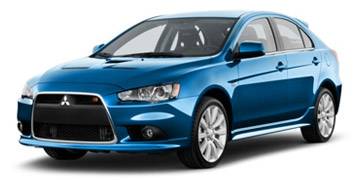
Help others by writing a review

Help others by writing a review
Added: 16th of September 2020
have had mitsy for six years, and has not let me down, the front brakes had to be replaced a lot, until we found abs ring was rusty once cleaned working fine. but now she on her way to the scrap yard, as a man and his van ploughed it to the front of us, only thing that ever stop her getting me home.
Added: 12th of October 2016
I have had the car from new and have been very pleased with it. Dealer service excellent, spares a little expensive, fuel consumption 35+. It does everything I want, pity they stopped making them.
Added: 26th of May 2015
The car was what I expected from Mitsibushi
Added: 1st of May 2014
Bought this car in February 2013 as 2nd owner. Never let me down in the 14 months of ownership. Brilliant car that is overlooked by many. Juro model has all the toys required including SatNav and Bluetooth connection. Done many long journeys and just love the car, even passengers enjoy the journey. The engine has enough 'ooomph' for anyone and always plenty of power to overtake when required. Special Note: With careful driving l have just recorded an average MPG of 74.7!!!! This is NOT the first time l have done this type of mileage. I have contacted Mitsubishi and sent photos of my instrument panel showing this extraordinary achievement (official mpg is expected around the 55mpg)
Added: 4th of February 2014
Only had the car 24 hours but drove 100+ miles in it on the way home on a variety of roads and am really impressed with how it performed. Really comfortable car and meets all my expectations. Have seen reviews which describe the interior as bland but personally don't find this the case. This is the GS2 version but seems to have a good range of features for the price.
Added: 18th of November 2013
I bought the car second hand when it was 3 years old. I have had no major problems with it so far. It performed well during the harsh winters and I was able to drive on snow and icy surfaces by using the semi auto mode of gear selection. My two main annoyances are that the side driver's and passenger's windows are hard to keep de-misted and you have to remove the whole rear light units to replace a bulb. It is a very versatile vehicle with the rear seats down I have managed to transport many large items with ease.
Added: 16th of November 2013
Excellent Japanese engineering and reliability but a completely uninspiring drive. If you want a car to get you from A to B this is for you.
Added: 15th of November 2013
I bought this car band new and have found it to be quick quiet and comfortable,fuel consumption is around 34 MPG +. Servicing is no more expensive than anything else, parts again are averagely priced for a Japanese motor. Fortunately, I have had no major parts expenses up to yet at just under 60.000 miles. Would I buy another one, definitely yes.
Added: 15th of November 2013
the car has now done 70000 miles since we bought it and has never let us down. practical and plenty of space for us and our dog.
Added: 14th of October 2013
a good car not many toys inside bau all way starts first time i have had this car for 6 years and no problems.
Added: 14th of October 2013
The Lancer is a bland but comfortable car to dive. Economy is good if driven carefully and intelligently. Performance is unexciting and best termed as average.Reliability is very good if regular servicing maintained. An all round car that performs well but does not break the budget.
Added: 13th of October 2013
good to drive but boot is awful
Added: 12th of October 2013
This is the best car I have ever owned, it's a joy to drive, I hardly ever have any problems with it, very reliable and cost effective.
Added: 11th of October 2013
I am very happy with this motor, It,s quick, quiet, very reliable,no major problems in 53000 miles of motoring and regularly returns 35+ to the gallon. Servicing is not overly expensive, although some spare parts are expensive, but the need for these has been negligible.